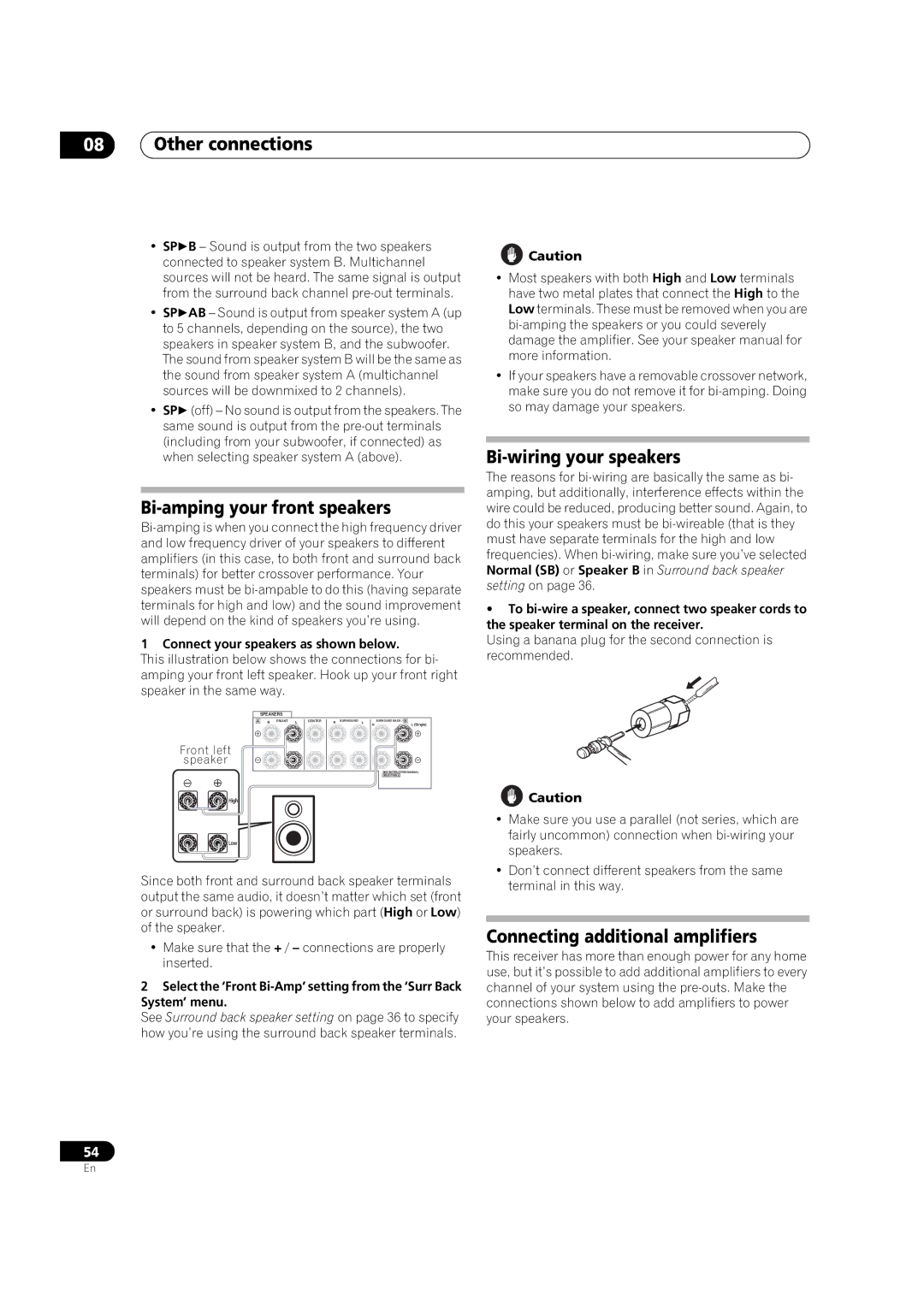
08Other connections
•SPB – Sound is output from the two speakers connected to speaker system B. Multichannel sources will not be heard. The same signal is output from the surround back channel
•SPAB – Sound is output from speaker system A (up to 5 channels, depending on the source), the two speakers in speaker system B, and the subwoofer. The sound from speaker system B will be the same as the sound from speaker system A (multichannel sources will be downmixed to 2 channels).
•SP(off) – No sound is output from the speakers. The same sound is output from the
Bi-amping your front speakers
1 Connect your speakers as shown below.
This illustration below shows the connections for bi- amping your front left speaker. Hook up your front right speaker in the same way.
| SPEAKERS |
|
|
|
|
|
|
A | R FRONT | L | CENTER | R | SURROUND | L | SURROUND BACK / B |
|
|
|
|
|
| R | L (Single) |
Front left |
|
|
|
|
|
|
|
speaker |
|
|
|
|
|
|
|
|
|
|
|
|
|
| SEE INSTRUCTION MANUAL |
|
|
|
|
|
|
| SELECTABLE |
![]()
![]()
![]()
![]()
![]()
![]() High
High
![]()
![]()
![]() Low
Low
Since both front and surround back speaker terminals output the same audio, it doesn’t matter which set (front or surround back) is powering which part (High or Low) of the speaker.
•Make sure that the + / – connections are properly inserted.
2Select the ‘Front
See Surround back speaker setting on page 36 to specify how you’re using the surround back speaker terminals.
![]() Caution
Caution
•Most speakers with both High and Low terminals have two metal plates that connect the High to the Low terminals. These must be removed when you are
•If your speakers have a removable crossover network, make sure you do not remove it for
Bi-wiring your speakers
The reasons for
•To
Using a banana plug for the second connection is recommended.
![]() Caution
Caution
•Make sure you use a parallel (not series, which are fairly uncommon) connection when
•Don’t connect different speakers from the same terminal in this way.
Connecting additional amplifiers
This receiver has more than enough power for any home use, but it’s possible to add additional amplifiers to every channel of your system using the
54
En
